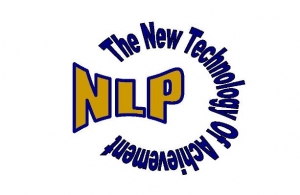We and our children have different hair, eyes, body sizes, and different preferences in a thousand areas. Some of us prefer high levels of stimulation, while others like a more quiet world. Some are attracted to novelty and variety, whereas others are most comfortable with the consistent and predictable. In these and many other ways, we aggregate differences which sometimes collect in such a way that we put a label on them, such as “AD/HD” or “Dyslexia” or “Dyspraxia”.
There are, however, other more fundamental differences between people. At the level of these differences, it is possible to gain direct access into the way a person’s mind works, the way they store and process experience and emotion, the way they make decisions and choices. These differences have to do with how we experience and make sense of the world around us.
Do you often catch yourself saying things like “That looks right to me,” or “I get the picture”? Or are you more likely to say “That sounds right to me,” or “That rings a bell”? Or “I like the feel of that,” or “I grasp it now”? Expressions like these may be clues to your preferred modality, or preferred way of making sense of your world.
If you couldn’t see or hear, or if you couldn’t feel texture, shape, temperature, weight, or resistance in your environment, you would literally have no way of learning. Most of us learn in many ways, yet we usually favour one modality over the others – some of visual learners, some auditory, others kinesthetic learners. Many people don’t realise they are favouring one way, because nothing external tells them they are any different from anyone else. Knowing that there are differences goes a long way towards explaining things like why we have problems understanding and communicating with some people and not with others, and why we handle some situations more easily than others, and why we may have learning difficulties.
Visual Learners
are neat and orderly
speak quickly
are good long-range planners and organisers
are observant of environmental detail
are appearance-oriented in both dress and presentation
are good spellers and can actually see the words in their minds
remember what was seen, rather than heard
memorise by visual association
And ……
usually are not distracted by noise
may forget verbal instructions unless they’re written down
are strong, fast readers
would rather read than be read to
need an overall view and purpose and are cautious until mentally clear about an issue or project
forget to relay verbal messages to others
often know what to say but can’t think of the right words
Auditory Learners
learn by listening, and remember what was discussed rather than seen
speak in rhythmic patterns
talk to themselves while working
are easily distracted by noise
move their lips and pronounce the words as they read
enjoy reading aloud and listening
can repeat back and mimic tone pitch and timbre
find writing difficult, but are better at telling
are frequently eloquent speakers
are talkative, love discussion, and go into lengthy descriptions
have problems with projects that involve visualisation
can spell better out loud than in writing
Kinesthetic Learners
learn by manipulating and doing
want to act things out
speak slowly
touch people to get their attention
stand close when talking to someone
are physically oriented and move a lot, gesture a lot
memorise by walking and seeing
can’t sit still for long periods of time
can’t remember geography unless they’ve actually been there
use action words
like plot-oriented books – they reflect action with body movement as they read
may have messy handwriting
like involved games
For centuries the problem of dyslexia has been wrongly equated with a lack of intelligence but we now know it’s more a problem of perception. Ron Davis, author of the book “The Gift of Dyslexia”, discovered that dyslexia was related to a sense of internal disorientation and perception. Over the years, a number of Neuro-Linguistic Programming (NLP) practitioners reported that their “learning disabled” clients, children and adults, had difficulty making stable, clear imaginary pictures.
Dr Don Blackerby, a well respected expert on NLP & Learning disorders in the USA, and author of the book “Rediscover the Joy of Learning”, while studying children with AD/HD, discovered that their subjective experience, or perception, was driving the symptoms. The perception on their part was that they either could not control their mind or their mind controlled them. He also found that the internal experience of a person with ADD symptoms include: they perceive multiple images; these images are moving rapidly and sometimes mysteriously disappear; the images often occur simultaneously; there is a strong body and/or emotional response to the images; and they can’t control any of these internal experiences.
So what if they knew how to change this perception? What if they knew how to stabilise their internal pictures and take back control of their internal experiences?
NLP provides the HOW
via Learning Coach.


Outstanding post, you have pointed out some fantastic points , I besides think this s a very great website.